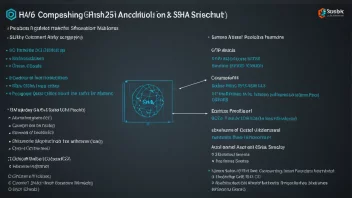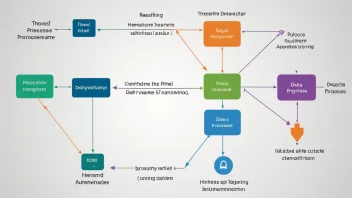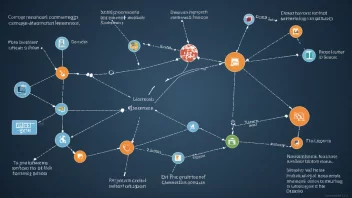Introduction
As the world becomes increasingly digital, the landscape of work has shifted dramatically, especially for digital nomads. These modern-day adventurers, who blend work with travel, face unique cybersecurity challenges. Understanding these challenges and implementing robust security practices is essential for protecting personal and professional data while on the move.
What are the primary cybersecurity risks for digital nomads?
Digital nomads often face several cybersecurity risks, including:
- Public Wi-Fi vulnerabilities: Many nomads rely on public Wi-Fi networks in cafes, airports, and hotels, which can be insecure and susceptible to attacks.
- Phishing attacks: As remote workers, digital nomads may receive numerous emails that can be disguised as legitimate communications, leading to credential theft.
- Device theft: Traveling with laptops and smartphones increases the risk of theft, which can jeopardize sensitive information.
How can digital nomads secure their devices?
Securing devices is crucial for digital nomads. Here are some key strategies:
- Use VPNs: A Virtual Private Network encrypts internet traffic, providing a secure connection even on public networks.
- Enable two-factor authentication: Adding an extra layer of security can help protect accounts from unauthorized access.
- Keep software up-to-date: Regular updates to operating systems and applications can patch vulnerabilities that could be exploited.
What should nomads know about using public Wi-Fi safely?
While public Wi-Fi is convenient, it can be risky. Here are some safety tips:
- Avoid sensitive transactions: Refrain from accessing sensitive accounts or performing transactions over public networks.
- Turn off sharing: Disable file sharing and other sharing features when connected to public Wi-Fi.
- Forget networks: After using a public Wi-Fi network, ensure your device no longer remembers it to prevent automatic connections.
What tools can help enhance cybersecurity for digital nomads?
Several tools can improve security for digital nomads:
- Password managers: Tools like LastPass or 1Password help create and store strong, unique passwords for different accounts.
- Antivirus software: Reliable antivirus solutions can protect devices from malware and other malicious software.
- Encryption tools: Software that encrypts files and folders can add an extra layer of security for sensitive data.
How can digital nomads protect their data in case of device theft?
In the unfortunate event of device theft, digital nomads can take these steps:
- Remote wipe capability: Ensure that devices can be wiped remotely if they are lost or stolen.
- Backup data regularly: Use cloud services or external drives to back up important data to minimize losses.
- Track devices: Use tracking software to locate lost devices, which can aid in recovery efforts.
What are some best practices for secure remote work?
To maintain security while working remotely, consider the following best practices:
- Use strong, unique passwords: A combination of letters, numbers, and symbols can enhance password strength.
- Be cautious with downloads: Avoid downloading files or clicking links from unknown sources to mitigate risks of malware.
- Educate yourself: Stay informed about the latest cybersecurity threats and trends to remain vigilant.
Conclusion
For digital nomads, cybersecurity is not just an option; it’s a necessity. By understanding the risks and implementing effective security measures, nomads can protect their data and enjoy the freedom of their lifestyle without compromising their safety.






